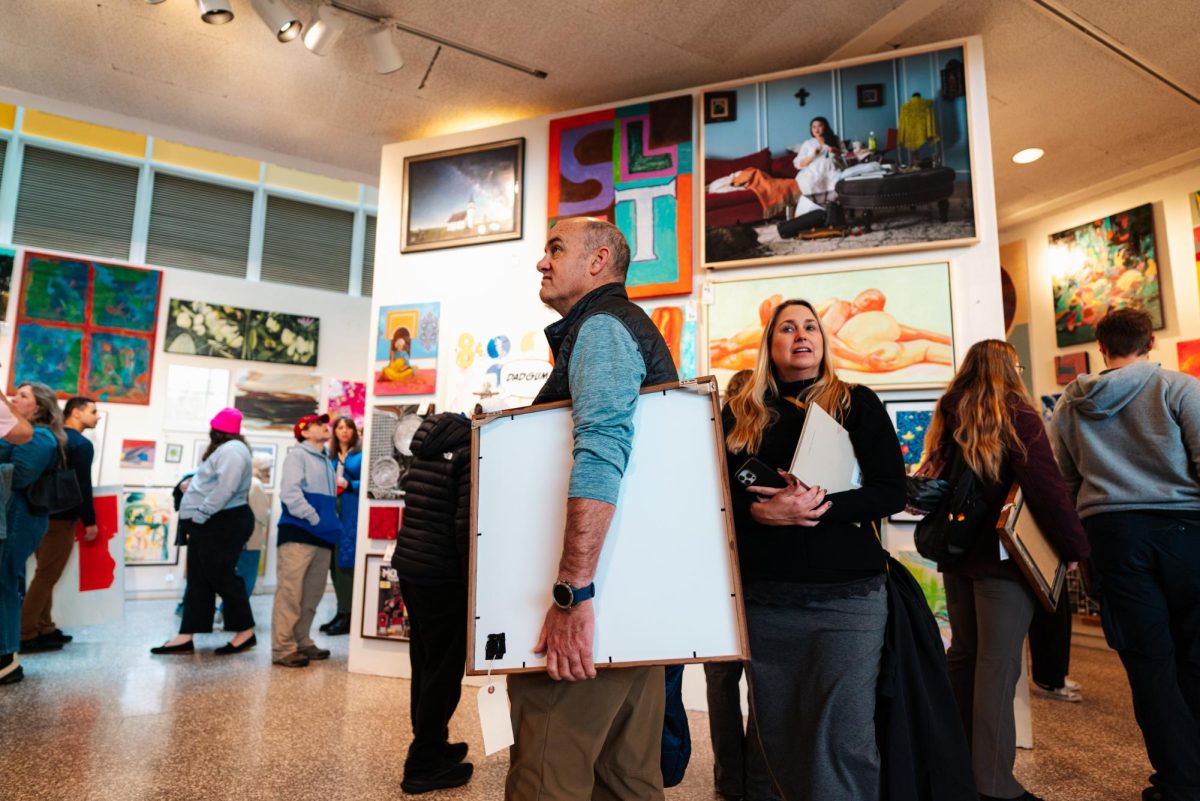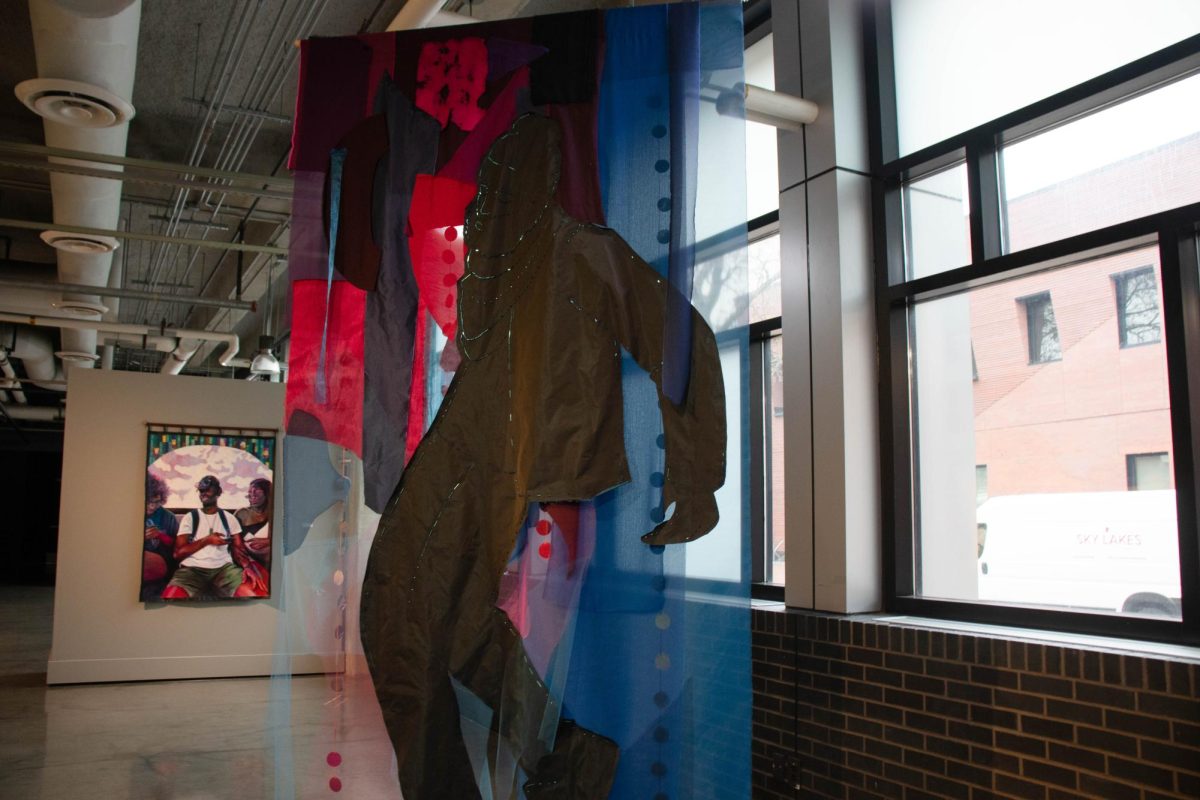Where: Minneapolis Institute of Arts, Gallery 262
What: Angela StrassheimâÄôs âÄúEvidenceâÄù photo series
When: Now through Oct. 11
In Gallery 262 at the Minneapolis Institute of Arts, thereâÄôs the fourth installment of the ongoing âÄúNew PicturesâÄù series, each show featuring work from a selected experimental photographer.
In Angela StrassheimâÄôs case, the experimentation that the âÄúNew PicturesâÄù series refers to isthe subject matter and the process through which it was captured. All of the photographs in the series are portraits of homes where familial homicide occurred anywhere from the past two months to 12 years.
StrassheimâÄôs collection is comprised of smaller, color exterior shots of anonymous houses between large, almost consuming, black-and-white interiors of intimate, dimly lit spaces whose only illumination is a blot, splotch or speckle of luminescent white.
Strassheim returned to the locations long after the crime scene had been cleaned up and, except for one case, new families had moved in. The light in the pictures is the result of a chemical reaction between human blood and a substance called âÄúBlueStar,âÄù which makes residue that has since been cleaned away visible to the naked eye.
StrassheimâÄôs photographs are a double exposure of the room, taken once right after sunset to capture the features of the untreated room, and again after nightfall when âÄúBlueStarâÄù has been applied and the remnants of the crime scene begin to glow.
Strassheim is no stranger to unsettling juxtapositions, which she has addressed in both her past and current work. âÄúI like to shake people up,âÄù she said.
However, she emphasized that her objective for âÄúEvidenceâÄù is not to create disturbing images. âÄúIâÄôm trying to make it positive. They arenâÄôt creepy spaces. TheyâÄôre homes where people live. I chose homes that feel like the people that come to look at art. Most of them are just common, regular homes.âÄù
Strassheim, a Midwest native and Minneapolis College of Art and Design graduate, started the project after a 6 1/2-year career as a forensic photographer.
âÄúAs a forensic photographer, I was always very drawn to the crime scene because it was a puzzle that you had to put back together,âÄù Strassheim said. âÄúGoing to a crime scene is very quiet, and it feels so safe âĦ In that moment of processing a case, itâÄôs so peaceful.âÄù
During that time, her job would require her to observe more than 1,000 autopsies and innumerable crime scenes, but Strassheim used her experience to perform her own kind of surgery and speculation. âÄúI always saw art in it. Every time I had to do it,âÄù she said.
That art comes through in StrassheimâÄôs adoption of both technical and thematic elements from her profession into her photography.
âÄúItâÄôs putting that puzzle back together,âÄù Strassheim said, also emphasizing the importance of time in her work. âÄúIt still exists in that space, yet someone new has moved into this space, and life moves on. But to the people who lost someone, their life never moves on.âÄù
In 2008, she began the laborious process of combing through state homicide records and performing meticulous research so she would know if an arrest was made, the specific weapon used and where exactly in the house the murder occurred. Strassheim visited more than 140 houses across the country but got access to only 18. Of the 18 photographed, only twelve are part of the series, five of which are on display at the MIA.
Many might view the photographs and only see some brash and irreverent critique on the concealed but undeniable violence of American life. But to read the titular evidence as solely a reference to crime scene vernacular is an interpretation that dwells on the superficial, and StrassheimâÄôs images are rooted in a profoundly personal realm.
âÄúThis is the last of [the victim] still present in the world,âÄù Strassheim said. âÄúI see these as memorials to the people who fought for their will to live.âÄù
Strassheim, though as thorough and diligent as a detective, entered her project with a sensitivity and conscientiousness suitable to the purpose of her work. She is not as committed to bearing harsh truths as her photographs may suggest. When one family believed the murder in their home occurred in part of their home and Strassheim found otherwise, she proceeded to photograph where they believed the crime took place.
âÄúI want to give them only what they know is correct as opposed to more to the story than they need to know,âÄù she said.
She also went to great lengths to preserve the anonymity of all individuals involved and each home that was photographed. All interior shots have no exteriors, and vice versa.
Strassheim prefers to keep her work open to interpretation. âÄúI like my photographs to ask more questions than give solid answers.âÄù In âÄúEvidence,âÄù viewers can see through StrassheimâÄôs eyes. They become a proxy witness to the scene of a crime, where questions go unanswered and so many puzzles must be put together.







